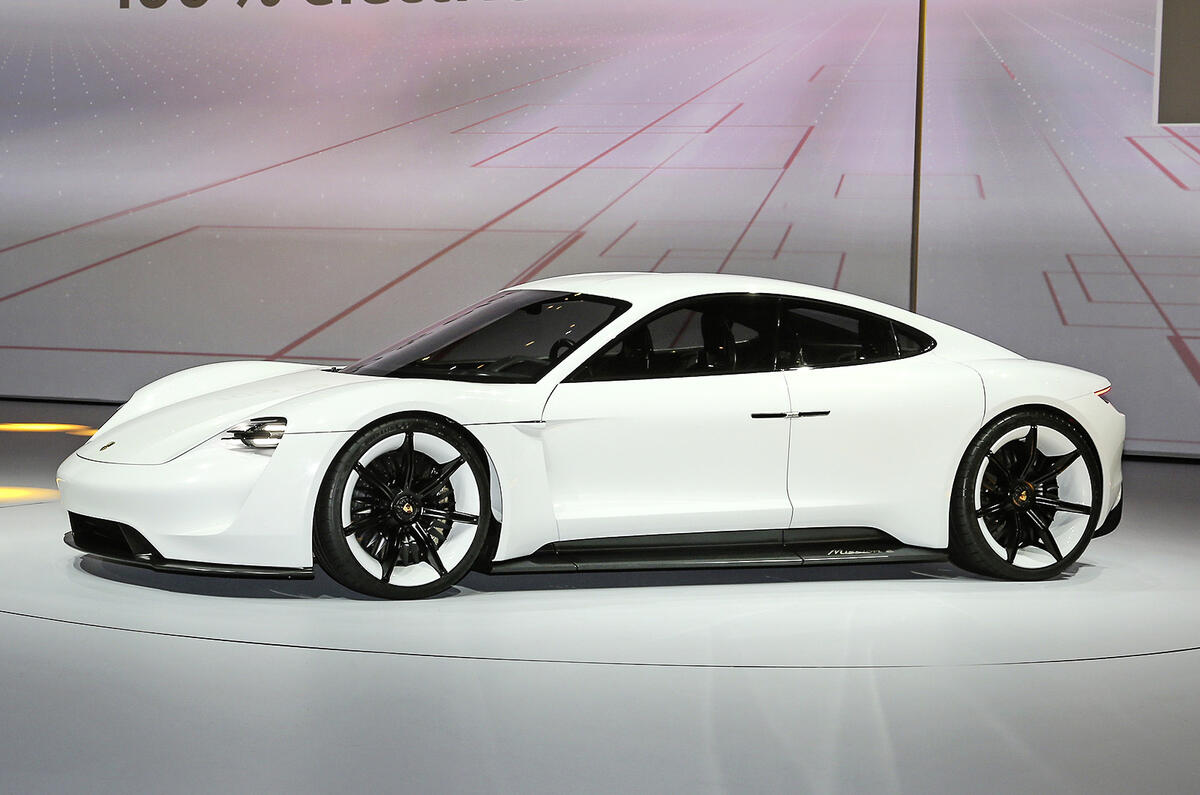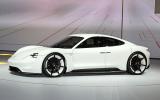Porsche has stolen the limelight at this year’s Frankfurt motor show with the unveiling of this spectacular new 600bhp plus electric-powered concept car – the Mission E.
Drawing on the electric drive and energy storage know-how gained in the development of the Le Mans-winning 919 Hybrid race car, along with the lightweight construction and battery technology created for the 918 Spyder hypercar, the sleek new four-door concept is claimed to closely preview an innovative new Telsa Model S rival that's being readied for launch before the end of the decade.
911 Turbo pace
With a 0-62mph time to challenge the latest 911 Turbo and a claimed range of more than 331 miles, the Mission E holds true to Porsche’s practical performance mantra, while also taking a nod to the future with the latest in 800 volt recharging technology and full zero-emission compatibility.
"We always said that when we do an electric car, it would be a true sportscar. We also said it would offer the performance traditional Porsche buyers demand,” said Wolfgang Hatz, head of research and development, at the unveiling of the Mission E on Monday evening, adding, “We have achieved both goals, while providing it with everyday practicality and an exceptional range.”
Power for the four-wheel drive Mission E is provided by two electric motors – one mounted up front acting on the front axle and one at the rear providing drive to the rear wheels. Produced in-house, both units run in a permanent synchronous state for what Hatz describes as “uniform power development for reliably reproducible accelerative ability” and “greater scope for energy recuperation”.
The German car maker is yet to reveal the individual power loadings for each motor, but confirms a combined output of over 600bhp and 663lb ft of torque. This provides the new concept with at least 80bhp more than the twin-turbocharged 3.8-litre six cylinder 911 Turbo – the fastest-accelerating production Porsche.
With a kerb weight of over 2000kg, the Mission E is claimed to hit 62mph from standstill in 3.5sec – or just 0.1sec shy of the 911 Turbo's official time. Hatz indicated to Autocar that this figure could be beaten in real world tests, but the issue is less about power and more about transferring it to the road. "We are right on the limit for traction off the line" he admitted.
Porsche also quotes a 0-200km/h time of less than 12.0sec for its new concept, which uses an on-demand four-wheel drive system in which the front wheels are driven only during acceleration, under hard driving or on slippery road surfaces. An electronically controlled torque-vectoring function also automatically distributes drive to each individual rear wheel for improved handling balance.






















































Join the debate
Add your comment
Mission RE
...and where are the plans for worldwide charging infrastructure
It's not the fact it could charge quickly. To have credibility Porsche needs to commit to the infrastructure. And if they do that their analysts will ask how much building that infrastructure would cost / hurt the bottom line.
Please Porsche